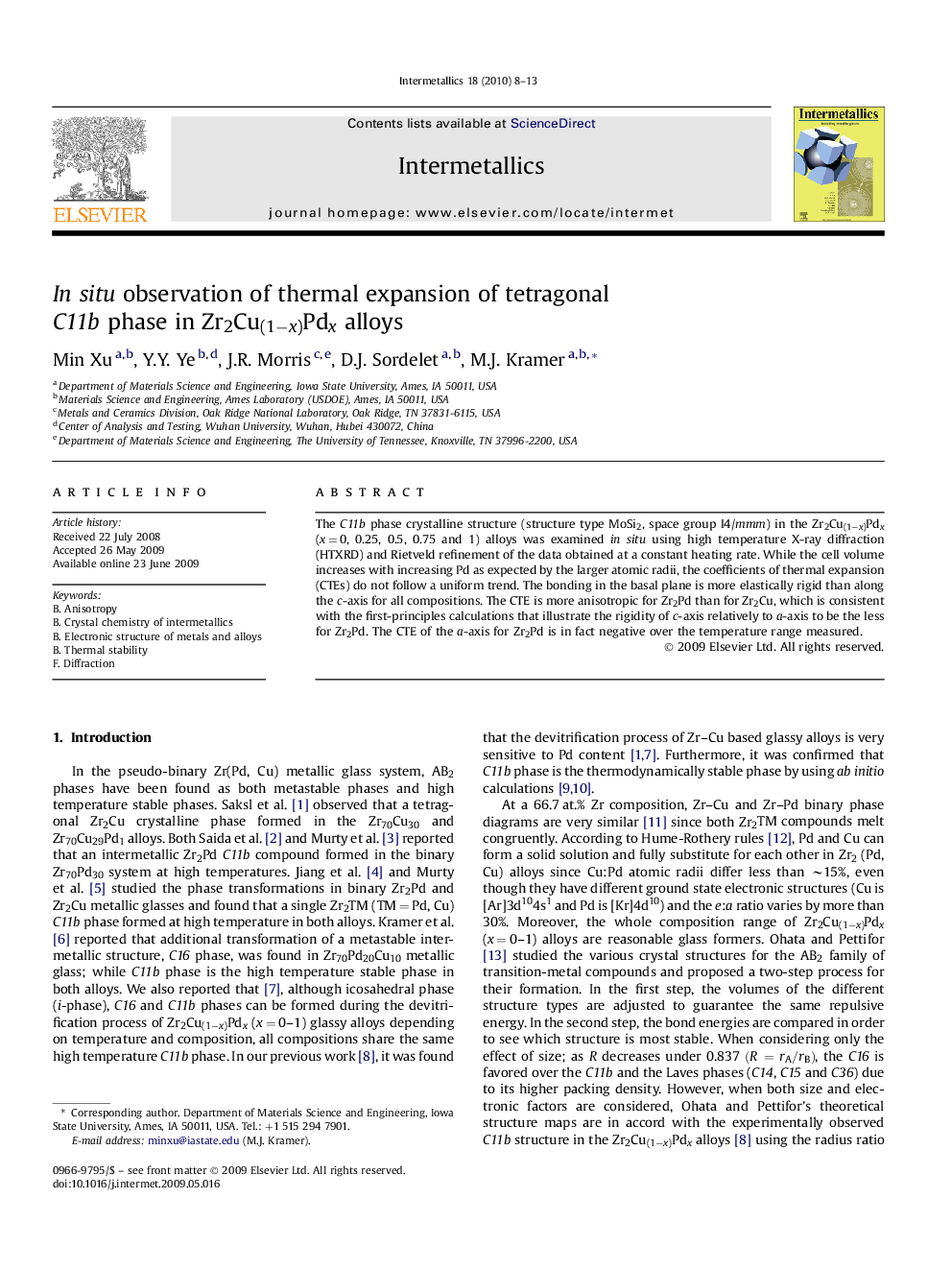| Article ID | Journal | Published Year | Pages | File Type |
|---|---|---|---|---|
| 1601034 | Intermetallics | 2010 | 6 Pages |
The C11b phase crystalline structure (structure type MoSi2, space group I4/mmm) in the Zr2Cu(1−x)Pdx (x = 0, 0.25, 0.5, 0.75 and 1) alloys was examined in situ using high temperature X-ray diffraction (HTXRD) and Rietveld refinement of the data obtained at a constant heating rate. While the cell volume increases with increasing Pd as expected by the larger atomic radii, the coefficients of thermal expansion (CTEs) do not follow a uniform trend. The bonding in the basal plane is more elastically rigid than along the c-axis for all compositions. The CTE is more anisotropic for Zr2Pd than for Zr2Cu, which is consistent with the first-principles calculations that illustrate the rigidity of c-axis relatively to a-axis to be the less for Zr2Pd. The CTE of the a-axis for Zr2Pd is in fact negative over the temperature range measured.
